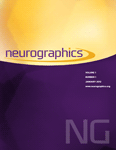
Eye as a Window to the Soul: Orbital Anomalies with Underlying Central Nervous System Pathologies
This review serves as a resource for radiologists to better understand the relationship between orbital and intracranial malformations by showing their common imaging appearances through illustrative cases. Attention will be placed on the typical orbital anomalies of well-known syndromes with CNS manifestations. Similarly, the orbital components of more complex CNS syndromes will be discussed because they may be more subtle and overlooked if unknown, but with devastating consequences.
Recognizing the intricate relationship between orbital and intracranial anomalies underscores the critical role of the radiologist for prompt and accurate diagnosis to secure optimal management, avoid unnecessary treatment and/or disease progression, and ultimately maximize patient care.
Learning Objective: Identify congenital orbital anomalies and recognize associated intracranial anomalies.
Keywords: CHARGE = coloboma, heart defects, choanal atresia, growth retardation, genital abnormalities, and ear abnormalities; MGDA = morning glory disc anomaly; NF1 = neurofibromatosis type 1; NF2 = neurofibromatosis type 2; ONH = optic nerve hypoplasia; PFV = persistent fetal vasculature; PHACES = posterior fossa malformations, hemangioma(s), arterial cerebrovascular anomalies, cardiovascular anomalies, eye abnormalities, and sternal clefting and/or supraumbilical raphe; SOD = septo-optic dysplasia; TORCH = toxoplasmosis, others (syphilis, varicella-zoster), rubella, cytomegalovirus, herpes simplex virus; VATER = vertebral anomalies, anal atresia, tracheoesophageal fistula, renal anomalies
Document Type: Research Article
Publication date: 01 April 2025
- Access Key
- Free content
- Partial Free content
- New content
- Open access content
- Partial Open access content
- Subscribed content
- Partial Subscribed content
- Free trial content